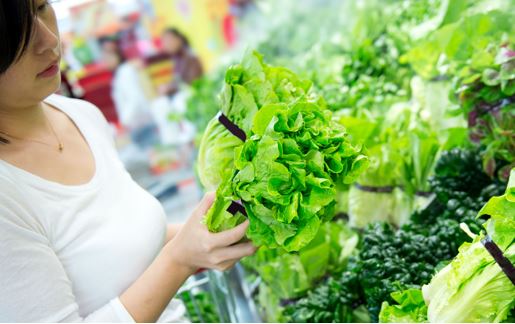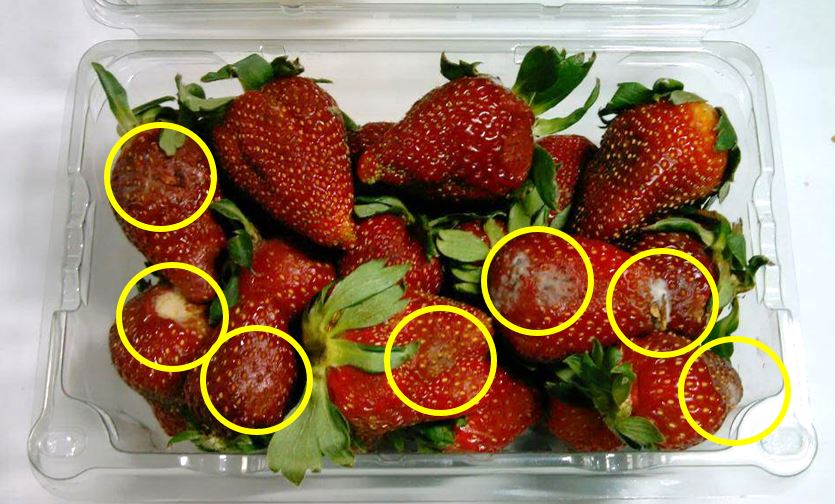Shelf-life variability can have a significant impact on customer satisfaction and loyalty to a grocery store. According to the Food Marketing Institute, the number one reason a shopper chooses a grocery store is because of “high quality fruits and vegetables” with 80 percent of people rating this as their primary motivation.
Too many customers, however, have had the unfortunate experience of purchasing produce that looks good on the store shelf only to have it “go bad” at home shortly after they purchase it and before they consume it. This problem occurs because of shelf-life variability – the produce is spoiling prematurely before the expected expiration date. This leads to food waste and customer dissatisfaction – dissatisfaction that could cause your customers to change stores looking for fresher, more consistent quality produce.
Significant Shelf-life Variability Between Stores and Within Stores
Most grocery stores assume that the produce they are receiving from their suppliers has uniform and consistent freshness or shelf-life. Data from a new Zest Labs research study shows that this is not the case and that there are significant variations in shelf-life for produce on the grocers’ shelves, both between competing stores and within individual stores.
The study, performed from February to May of 2019, was based on samples of strawberry clamshells, hearts of romaine lettuce and packaged salad mixes purchased throughout the research period from eight major U.S. grocery store chains. The samples were not evaluated prior to purchase and were randomly selected from the store shelves.
Key findings from the research included:
- Roughly half of the sample produce did not meet expected shelf-life requirements (49 percent of romaine hearts, 58 percent of purchased strawberries and 54 percent of packaged salad mixes). They spoiled prematurely, based on target shelf-life of the days indicated in the chart below, and could lead to customer dissatisfaction.
- Shelf-life variation of produce within individual stores varied dramatically by as much as 21 days for romaine, 12 days for strawberries and nine days for packaged salad mixes. This inconsistent freshness experience could lead to customer dissatisfaction as they may purchase produce one day that has 12 days of shelf-life and purchase produce from the same store on another day that has already spoiled. The research includes data for all three categories of products but, for our blog, let’s focus on strawberries. (You can find the data for romaine and salad mixes in the research report.)
Research Results for Strawberries
For strawberries, samples were selected across ten stores. The target goal was set at four days of shelf-life after purchase, based on conservative general industry expectations.
As shown in the Shelf-life Distribution above, variation within a single store was as much as 12 days at Store 3 (12 day maximum minus 0 day minimum. At least one sample at that store had 12 days of freshness while another sample was spoiled at purchase.) At that store, the average shelf-life of the samples was only 3.1 days, below the four days of desired freshness at purchase, meaning that the customer’s purchase would often lead to dissatisfaction.
Amazingly, half of the grocery stores in the study sold some strawberries that were spoiled at the time of purchase. (As indicated by the zeroes for Stores 3, 4, 5, 6 and 7.)
None of the samples purchased at Store 4 met the minimum four day shelf-life requirement. The other nine stores had some strawberries that exceeded the target freshness of four days, but all of them also sold strawberries that were below the target shelf-life goal. Some stores were better, on average, than others with store 10 having the highest average shelf-life – even though it also sold strawberries with as little as one day of shelf-life.
The photo above was taken from a sample one day after it was purchased. The berries were stored in optimal conditions for temperature and humidity. Note in the yellow circles examples of rot and mold. A customer purchasing this clamshell would likely throw it away the day after it was purchased, leading to waste and customer dissatisfaction.
Similar Results for Romaine Hearts and Packaged Salad Mixes
The study found similar results for romaine hearts and packaged salad mixes and the data is described in the complete research report.
Half-bad is Not Good
In the end, the study found that consumers have about a 50/50 chance of buying produce that meets their freshness expectations due to unmanaged shelf-life variability. One of every two consumers who buys a clamshell of strawberries, romaine hearts or salad mixes is likely to have to throw some or all of the produce out. When you pause to think about this, it’s pretty remarkable. And, yet, I’ll bet everyone who reads this will remember at least one time when they have opened their refrigerator only to find recently purchased produce had grown fuzz or was wilted or slimy.
Suppliers solving this problem by providing grocers with consistent freshness for produce can create competitive differentiation in the marketplace, both for themselves and for the grocers, ensuring customer loyalty and attracting new shoppers to the store.
The Causes of Shelf-life Variability
Shelf-live variability occurs primarily due to variations in harvest conditions and post-harvest handling and processing. Certainly, growers, suppliers and grocers strive to sell the freshest produce but when post-harvest processing and handling are not properly managed, the resulting shelf-life variability leads to premature spoilage of produce, either at the store or with the consumer.
By measuring and managing the impacts of shelf-life variation beginning at harvest, growers, suppliers, processors and grocers can ensure that each pallet of produce is delivered to the retailer with sufficient freshness for sale, and customer use and satisfaction, building customer loyalty for their preferred grocer.
How to Manage Shelf-life Variability
Zest Fresh™ helps identify and manage fresh food supply chain variability to improve delivered freshness and reduce shrink by 50% or more, while increasing customer satisfaction by ensuring consistency of the freshness and shelf-life of the produce that customers purchase.
Zest Fresh provides growers, shippers and retailers with autonomous, end-to-end cold chain visibility for proactive decision making. By intelligently managing the handling and quality of each pallet of produce beginning in the field, Zest Fresh makes it simple and easy to enable seamless matching of the retailers’ freshness needs with the actual produce freshness while monitoring adherence to the grower’s processes. Zest Fresh is easy to implement and makes it easy to make the right decisions every time.
More details and information about the research study, causes of shelf-life variation and premature spoilage as well as additional findings for correlations between price and freshness, supplier brand and freshness, and the accuracy of “Use By” dates are available by downloading the complete research report.





